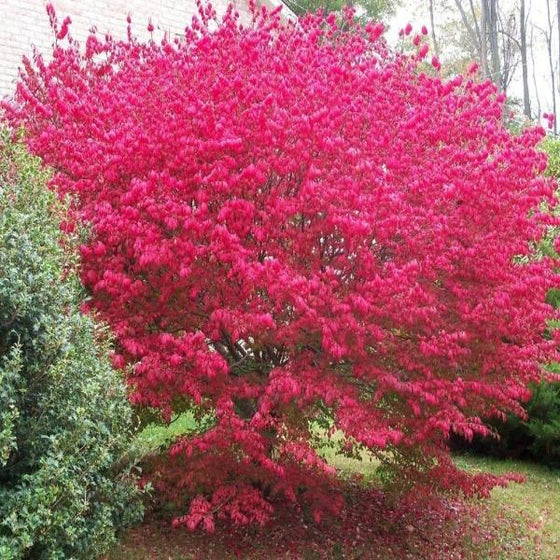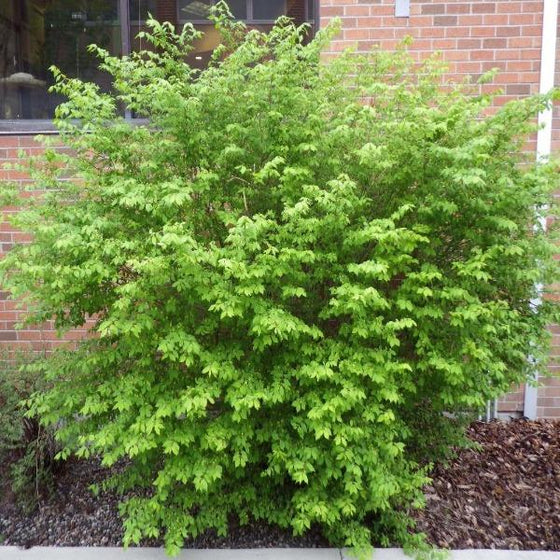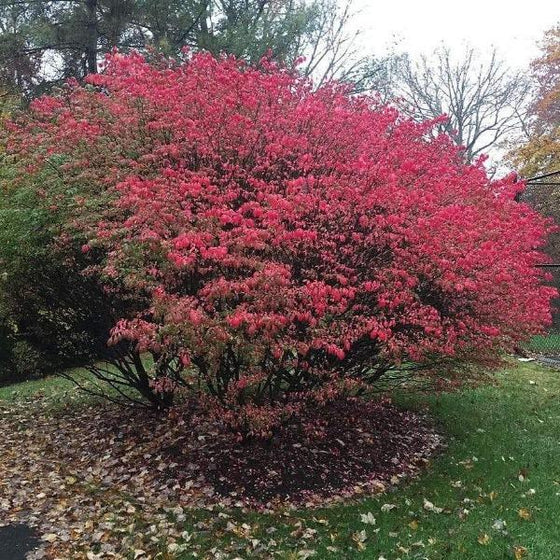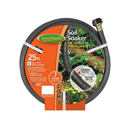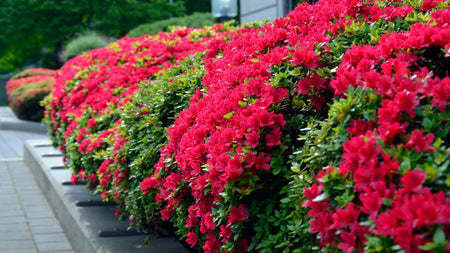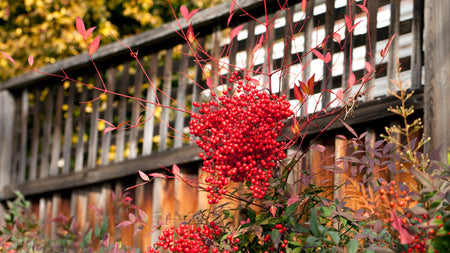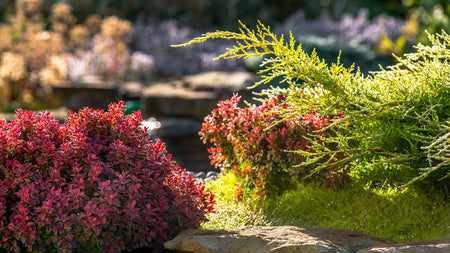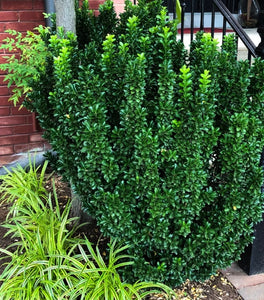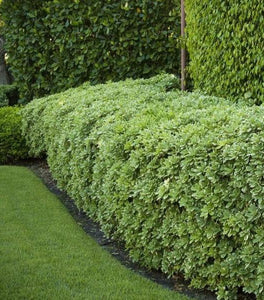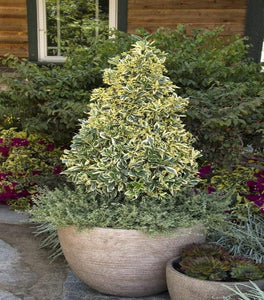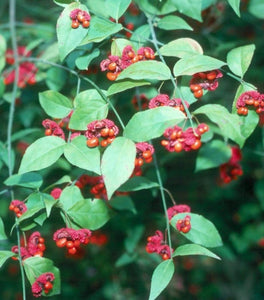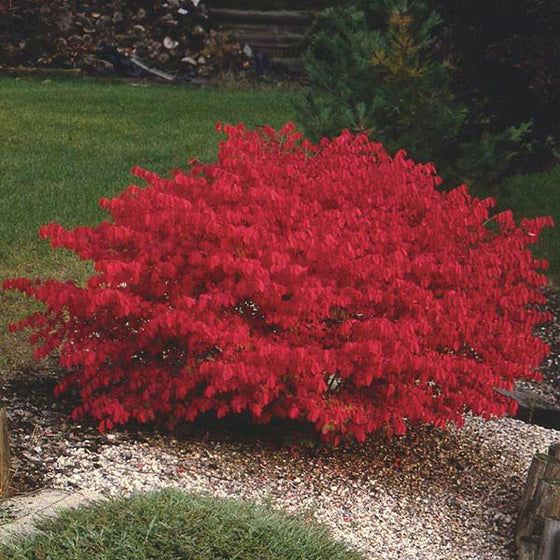
Images Depict Mature Plants
Burning Bush – Vibrant Red Fall Foliage Shrub for Borders and Hedges
A fall favorite that never fails to impress.
The Burning Bush (Euonymus alatus), also known as Winged Euonymus, is one of the most iconic landscape shrubs in North America. Celebrated for its brilliant scarlet-red foliage in fall, this deciduous shrub provides a spectacular burst of color that transforms ordinary yards into dazzling autumn displays. Its lush green summer leaves turn a vivid crimson as temperatures cool, earning its fiery name.
Perfect for hedges, borders, and accents.
Burning Bush grows 6–10 feet tall and wide, forming a dense, rounded shape that makes it ideal for privacy hedges, mass plantings, and foundation accents. It can also be pruned into a smaller, more compact form for borders or specimen use. The shrub’s strong structure, combined with its easy-care nature, makes it a landscape designer’s favorite for adding fall drama and year-round interest.
Hardy, drought-tolerant, and dependable.
Native to Asia but long loved in American gardens, Burning Bush is cold-hardy in USDA Zones 4–8 and thrives in a wide range of soil types. Once established, it is drought-tolerant and low-maintenance, requiring little beyond seasonal pruning. The shrub’s winged branches add textural interest even in winter, making it a true four-season performer.
A bold statement for any landscape.
Whether used as a stand-alone focal point or planted in rows for a fiery hedge, Burning Bush delivers unmatched seasonal color, reliability, and visual impact. For smaller spaces, consider the Dwarf Burning Bush, which offers the same vivid color on a more compact frame. Both varieties bring classic charm and easy care to any garden design.
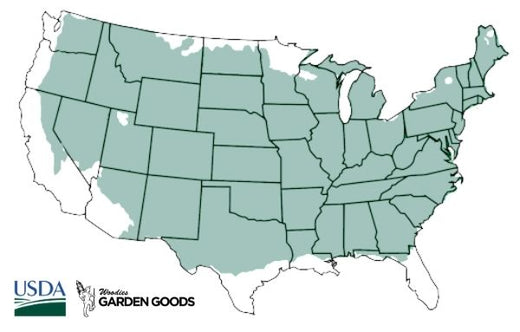
| Hardiness Zone: | 4-8 |
|---|---|
| Mature Height: | 6 to 10 Feet |
| Mature Width: | 6 to 10 Feet |
| Classification: | Broad leaved deciduous shrub |
| Sunlight: | Full sun |
| Habit: | Upright branching |
| Foliage: | Dark green, turning bright red in fall |
| Flower Color: | Inconspicuous |
| Pruning Season: | No pruning needed |
| Soil Condition: | Any well drained soil |
| Water Requirements: | Water well until established |
How to Care for Burning Bush
Before you buy a Burning Bush shrub, make sure to read about the care instructions that are recommended to keep this Euonymus healthy and thriving.
How do I plant a Burning Bush shrub?
Choose a sunny to partially shaded site with well-drained soil. Dig a hole twice as wide as the root ball and just as deep. Place the plant so the crown sits level with the soil, backfill halfway, water well, then finish filling and water again. For hedges, space Burning Bushes 4–6 feet apart to allow for mature growth. Finish by applying a 2–3 inch layer of mulch around the base to retain soil moisture and prevent weeds. Avoid piling mulch directly against the trunk to prevent rot.
How often should I water Burning Bush?
During the first growing season, water deeply once or twice per week to establish strong roots. After the first year, Burning Bush is highly drought-tolerant and needs little supplemental water except during prolonged dry spells. Deep, infrequent watering encourages deeper root systems, improving overall plant health. Burning Bush performs best when the soil is moist but never soggy.
When and how should I fertilize Burning Bush?
Fertilize in early spring using a balanced, slow-release fertilizer. Spread evenly around the root zone and water thoroughly. Fertilizing once per year is typically sufficient for established shrubs. Avoid over-fertilizing, which can encourage excessive leaf growth at the expense of fall color. Burning Bush performs well in average soils with minimal feeding.

Does Burning Bush need pruning?
Burning Bush is naturally dense and rounded, so pruning is optional. If shaping is desired, prune in late winter or early spring before new growth emerges. This helps maintain its form and encourages fuller branching. For hedges, annual trimming will keep a tidy shape. Removing older stems every few years can rejuvenate older plants and promote vibrant foliage.

